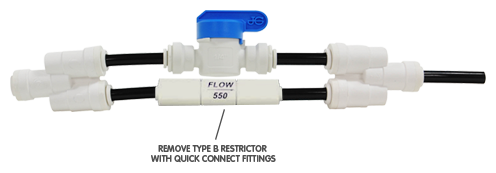Delabrum
Well-known member
- Messages
- 59
- Location
- Saltburn-by-the-Sea
I’ve been running a 600 GPD system for almost a couple of months now. I normally get 40 litres of pure per hour, but in the last week, it’s dropped to around 34/35 litres per hour. I’m still pretty new to this WFP lark, and I misunderstood how regularly I need to change the pre filters - to cut a long story short I thought they would need changing every 6-8 weeks, but it turns out they need changing every 3-4 weeks. So in other words I’ve been running the pre filters for almost a month past the recommended usage capacity. Doh.
My tds from the tap is about 120 and the RO pre resin is reading 2, so my rejection rate is 98-99%, which implies to me that the RO isn’t knackered. But could the reason my production rate has slowed a bit be down to damaging the RO membranes? If so, will my current output stabilize at 34/35 litres per hour if I change the pre filters more regularly?
I know 5 or 6 litres less per hour doesn’t sound like much, but if my production continues to slow I’ll run into problems making enough water for our little team.
Thanks guys.
My tds from the tap is about 120 and the RO pre resin is reading 2, so my rejection rate is 98-99%, which implies to me that the RO isn’t knackered. But could the reason my production rate has slowed a bit be down to damaging the RO membranes? If so, will my current output stabilize at 34/35 litres per hour if I change the pre filters more regularly?
I know 5 or 6 litres less per hour doesn’t sound like much, but if my production continues to slow I’ll run into problems making enough water for our little team.
Thanks guys.







